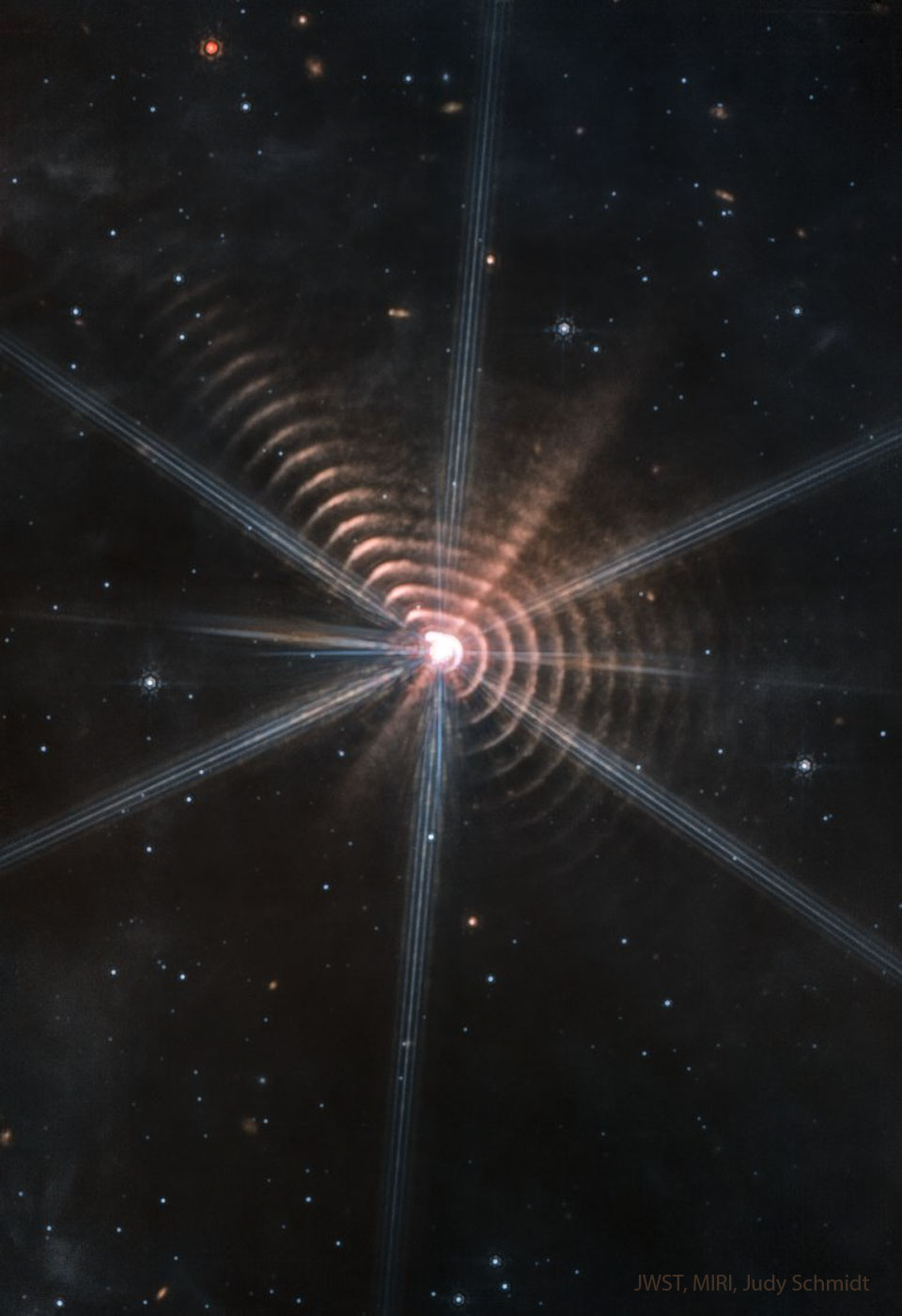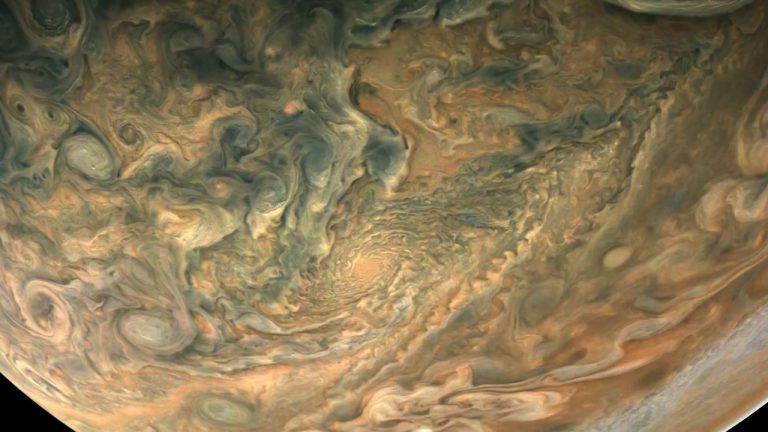2022年10月13日
Dust Shells around WR 140 from Webb
Image Credit: NASA, ESA, CSA, JWST, MIRI, ERS Program 1349; Processing: Judy Schmidt
Explanation: What are those strange rings? Rich in dust, the rings are likely 3D shells — but how they were created remains a topic of research. Where they were created is well known: in a binary star system that lies about 6,000 light years away toward the constellation of the Swan (Cygnus) — a system dominated by the Wolf-Rayet star WR 140. Wolf-Rayet stars are massive, bright, and known for their tumultuous winds. They are also known for creating and dispersing heavy elements such as carbon which is a building block of interstellar dust. The other star in the binary is also bright and massive — but not as active. The two great stars joust in an oblong orbit as they approach each other about every eight years. When at closest approach, the X-ray emission from the system increases, as, apparently, does the dust expelled into space — creating another shell. The featured infrared image by the new Webb Space Telescope resolves greater details and more dust shells than ever before.
Tomorrow’s picture: falcon and hunter
韦伯:恒星WR 140的尘埃壳
影像提供: NASA, ESA, CSA, JWST, MIRI, ERS Program 1349; 影像处理: Judy Schmidt
说明: 这些奇怪的环是什么?这些富含尘埃的环,可能是3维的壳层,不过它们到底是如何产生的,仍然是研究的课题。然而它们的诞生之处则众所周知,位于天鹅座方向6,000光年远的一个双星系统内,该系统的主控天体为沃夫-瑞叶型恒星WR 140。沃夫-瑞叶型恒星以质量大,明亮,与狂暴的恒星风著称。它们亦以会产生和散布重元素(诸如碳)而著称,而这些元素则是星际尘埃的建构成分。此双星里的另一颗恒星也是又亮又重,只是没那么活跃。这两颗巨星各自在椭圆轨道上飞奔,大约每8年发生近距离互扰。在最接近时,此系统的X射线辐射会增加,同时尘埃也会被排放到太空中,形成另一个新壳层。这幅由刚上线的韦伯太空望远镜所拍摄的红外光主题影像,解析出前更多所未见的细节及更多尘埃壳。
明日的图片: falcon and hunter







